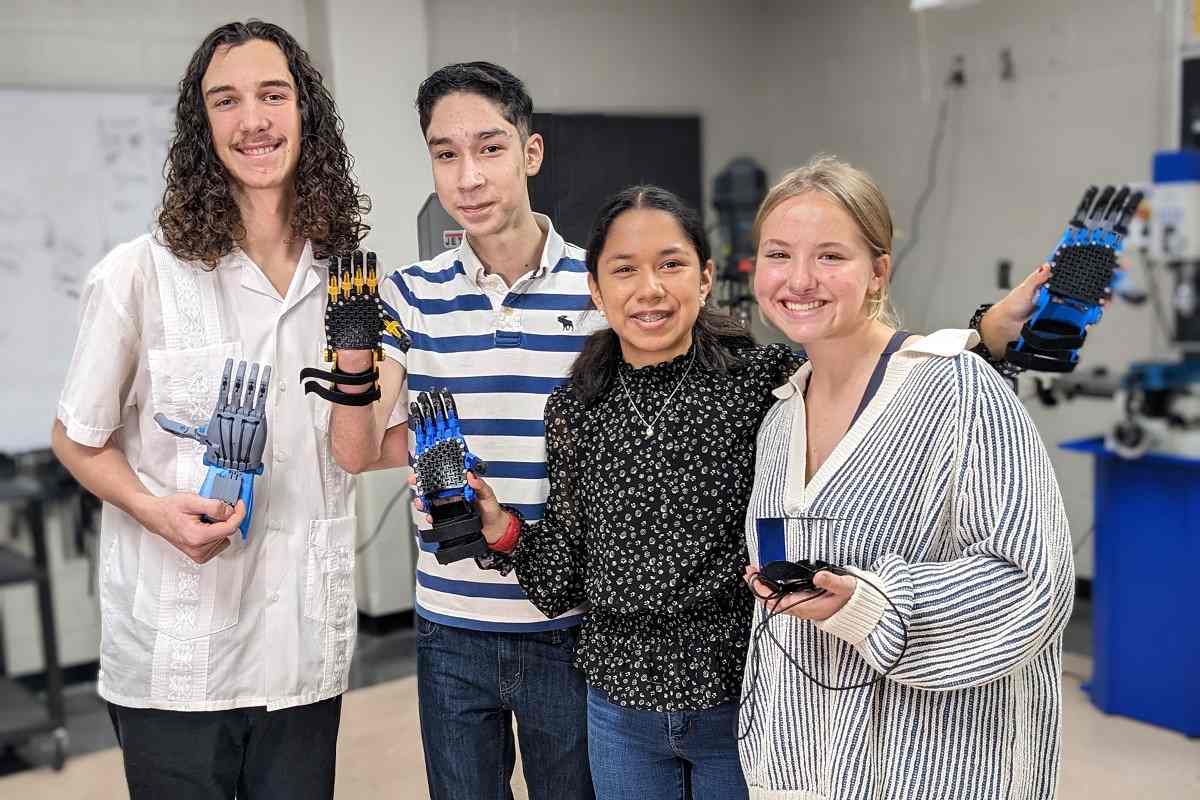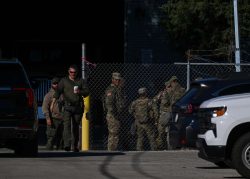
Sergio Peralta with the engineering students who created his prosthetic hand at Hendersonville High School in Tennessee.
15:36 JST, February 12, 2023
For his entire life, Sergio Peralta dreamed about playing catch.
When he was born, Peralta said, his right hand didn’t fully develop. Instead, he grew tiny fingers at the end of his arm. So he learned to do everyday activities – writing, eating, carrying books – with one hand. Over the years, the 15-year-old lost hope that would change.
But after Peralta enrolled at a new high school in August, engineering students there built him a prosthetic hand – a gesture the sophomore said has changed his life. Now, Peralta can not only toss a ball but also carry water bottles, cups and food with his right hand.
“I’ve started to feel more happy, more excited,” Peralta told The Washington Post. “I wanted to do a lot of stuff with my right hand. Now I can do more.”
After Peralta moved from Madison, Tenn., to nearby Hendersonville last summer, he said he hid his right hand in his sleeve at Hendersonville High. Ever since he was a child, Peralta said classmates have asked about his hand, and some teased him.
A few weeks into the school year, computer science teacher Jeff Wilkins noticed Peralta was the only student who moved his mouse to the left side of his keyboard. He then saw Peralta didn’t have a right hand. Peralta said he had never tried prosthetics because he had become comfortable using his left hand for most activities.
Wilkins, 43, had started an engineering program at Hendersonville in 2018 so students could take on projects to improve their community. He tried to create a wheelchair for a paralyzed student in Indiana around 2010, but he said he didn’t possess the equipment and skills to complete it. He still regretted that.
After he learned about Peralta’s hand, Wilkins remembered a video he’d seen years earlier from Enabling the Future, a volunteer group that makes 3D-printed prosthetic hands.
When Wilkins approached Peralta and his mother about a prosthetic hand, they expressed interest but knew building one could be challenging for a high school class. In early November, Wilkins secretly assigned three of his students to the project. They bought 3D printing equipment on Amazon and found a model image of a prosthetic hand on some design software.
“I didn’t want to get his hopes up,” Wilkins said. “I’d rather under-promise and over-deliver than overpromise and under-deliver on something like this.”
They used polylactic acid, a common plastic filament material in 3D printing that’s also used to make electronic devices, as the hand’s main fabric. They applied thermoplastic polyurethanes, an elastic plastic commonly found in phone and laptop cases, so the fingers could flex and squeeze objects. They added fishing line and Velcro so Peralta could easily strap the hand to his forearm.
The group did so while keeping their progress a secret. They measured classmates’ hands to gauge Peralta’s ideal fit.
After working on the hand for about a week, the students used the school’s LulzBot 3D printer to create a prototype. Students said they worried Peralta wouldn’t like or use the hand, but as soon as he put on the prototype in mid-November, he could flex his fingers.
Peralta said he was stunned. Then Wilkins tossed him a yellow rubber ball. While Peralta failed to catch the first few throws, students yelled in elation when he finally caught the ball.
“I was just so excited,” Peralta said.
Leslie Jaramillo, a senior who helped make the hand, said she didn’t expect the class project to change another student’s life.
“This just showed me a different way to help the community,” said Jaramillo, 17. “Even by using skills that I learn at school.”
In the following weeks, Peralta worked with Jaramillo and other student engineers as they upgraded three hand models. In early December, Peralta wore the final device home – and the students aced their assignment.
Peralta said he only removes the prosthetic hand when he sleeps. He uses it to pick up cups and bottles of water, he said, and wants to learn to write with it.
While Peralta and his classmates didn’t enter the school year with much engineering experience, they’re set on studying the subject in college and hope to work on other influential products.
“It’s been cool to see [the hand] being kind of a part of who he is now,” Wilkins said of Peralta. “I want to teach them that products don’t have to be about making money. They can be about making someone else have a more fruitful life.”
"News Services" POPULAR ARTICLE
-

American Playwright Jeremy O. Harris Arrested in Japan on Alleged Drug Smuggling
-

Japan’s Nikkei Stock Average as JGB Yields, Yen Rise on Rate-Hike Bets
-

Japan’s Nikkei Stock Average Licks Wounds after Selloff Sparked by BOJ Hike Bets (UPDATE 1)
-

Japan’s Nikkei Stock Average Buoyed by Stable Yen; SoftBank’s Slide Caps Gains (UPDATE 1)
-

Japanese Bond Yields Zoom, Stocks Slide as Rate Hike Looms
JN ACCESS RANKING
-

Tokyo Economic Security Forum to Hold Inaugural Meeting Amid Tense Global Environment
-

Keidanren Chairman Yoshinobu Tsutsui Visits Kashiwazaki-Kariwa Nuclear Power Plant; Inspects New Emergency Safety System
-

Imports of Rare Earths from China Facing Delays, May Be Caused by Deterioration of Japan-China Relations
-

University of Tokyo Professor Discusses Japanese Economic Security in Interview Ahead of Forum
-

Japan Pulls out of Vietnam Nuclear Project, Complicating Hanoi’s Power Plans
























